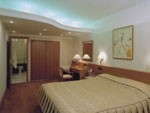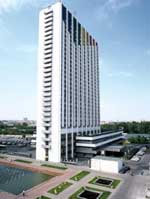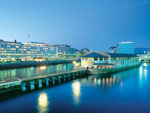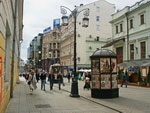 Along with Red Square, Kremlin and St.Basil’s Cathedral, the name of this street is well known not only in Moscow and Russia but also abroad. The Arbat is main and, perhaps, the oldest street of Moscow to which songs and poems were dedicated. At the same time the Arbat is not only a street but also area surrounding it with over 500-year history.
Along with Red Square, Kremlin and St.Basil’s Cathedral, the name of this street is well known not only in Moscow and Russia but also abroad. The Arbat is main and, perhaps, the oldest street of Moscow to which songs and poems were dedicated. At the same time the Arbat is not only a street but also area surrounding it with over 500-year history.
As early as the beginning of the 16th century, this region has been sparsely populated and therefore had the old Russian name “the field”. In the middle of that century tsar Ivan the Terrible lodged here the best marksman troops to protect Moscow on the western front.
Arbat street sprang in 1592 in the honor of the whole region. In fact, the name Arbat comes from Arabic rabad, meaning suburb. Perhaps, it was introduced into Moscow toponomy by Crimean tatars or Arab merchants who visited Moscow in the 15th century. This word rooted so solidly in the daily life of Moscow citizens that it could not be replaced by any other name.
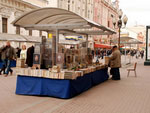 In the time of peace, marksman troops who lived in the Arbat were engaged with crafts, and this resulted in a range of workshops and benches that sprang up here by 17th century so that the Arbat turned into a large business street. In the middle of the 17th century the street was renamed into Smolensky street but that name didn’t become engrained.
In the time of peace, marksman troops who lived in the Arbat were engaged with crafts, and this resulted in a range of workshops and benches that sprang up here by 17th century so that the Arbat turned into a large business street. In the middle of the 17th century the street was renamed into Smolensky street but that name didn’t become engrained.
In 1736 the Arbat practically burnt out. Street was expanded, and, becoming one of major streets of the capital, it soon attracted Moscow nobility which quickly enough superseded handicraftsmen. The whole street was built up with small private residences of the representatives of the most well-known Russian families – Dolgorukiys, Golitsins, Gagarins, Rastopchins, Tolstoys, Sheremetyevs and others.
The Arbat was fully reconstructed after the fire in 1812, and newly built residences were surrounded with gardens. Also the street became the center of the high life. Outstanding Russian poets Pushkin, Gogol, Saltykov-Tchedrin, Checkhov, Tolstoy, Blokh used to live and stay here. Thus, Russian clerisy of various estates formed the main cohort populating the Arbat by the end of the 19th century.
Not only the population of the Arbat but also its face was changing: three-storied houses were being built, shops opened, horsecar appeared, and the first tram was set in 1908. Multistoried profitable houses were erected nearby. And this view of the main street of Moscow was already very close to the modern one.
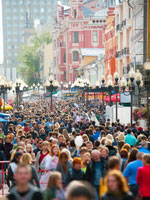 The 20th century heralded numerous changes for the Arbat. With the rist of the Soviet power the patrician face of street was changed in accordance with socialist model of constructivism: some buildings were taken down, houses were leveled under uniform eaves, and all buildings were painted into ash-grey colour. And now it hosted “builders of communism” rather than nobility and clerisy whose residences were transformed into communal flats. During the World War II the Arbat was strongly damaged by enemy air raids. The Theatre named after Vakhtangov was totally destroyed during one of the bombardments. Yet it was in 1974-1986 when the pedestrian zone was created with a number of shops and cafes which were heavily patronized by visitors to Moscow.
The 20th century heralded numerous changes for the Arbat. With the rist of the Soviet power the patrician face of street was changed in accordance with socialist model of constructivism: some buildings were taken down, houses were leveled under uniform eaves, and all buildings were painted into ash-grey colour. And now it hosted “builders of communism” rather than nobility and clerisy whose residences were transformed into communal flats. During the World War II the Arbat was strongly damaged by enemy air raids. The Theatre named after Vakhtangov was totally destroyed during one of the bombardments. Yet it was in 1974-1986 when the pedestrian zone was created with a number of shops and cafes which were heavily patronized by visitors to Moscow.
Today the Arbat is one of the most popular places of Moscow and is visited daily by hundreds of tourists. And it is no surprise: Pushkin's Museum-apartment, Tsvetaeva's House-museum, Lermontov's House-museum are located here. The Vakhtangov’s Theatre was also reconstructed after the war. Some might be attracted to Tsoy's Wall, perhaps, the most known representative of Russian rock, after whose death the whole wall was overwritten by slogans “Tsoy it is alive” and some citations from his songs. And if the Kremlin always has always been the center of the power, Red Square – the center of the light life, it is the Arbat that encapsulates the center of Moscow culture.

